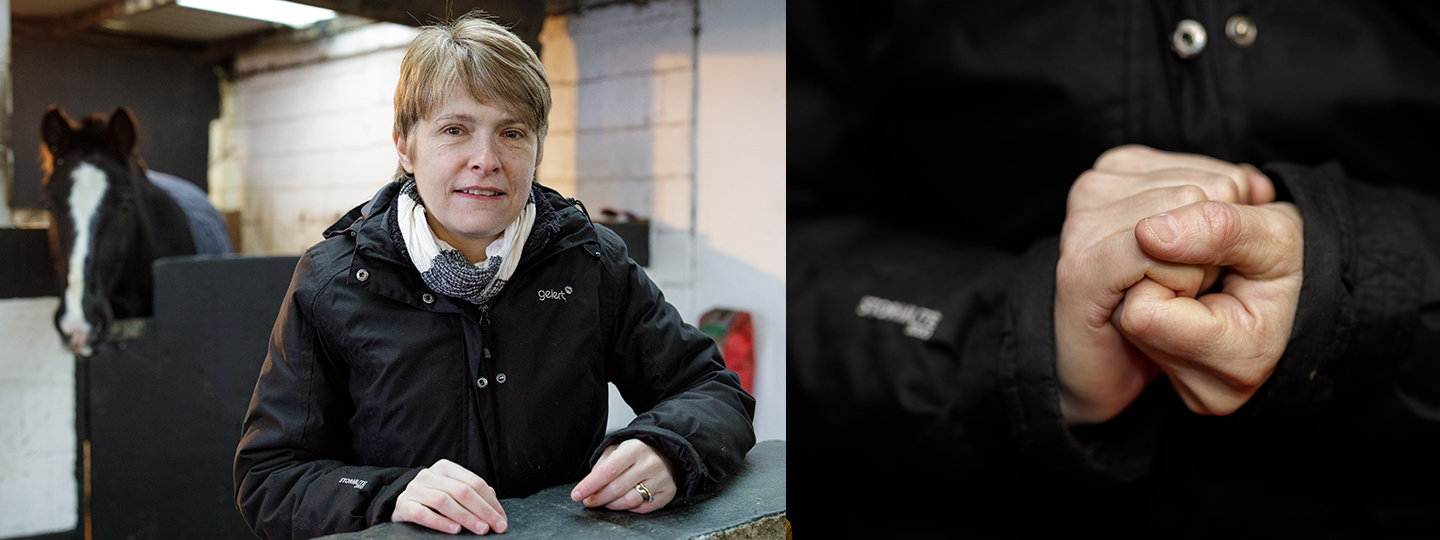What is Raynaud's? Sarah's experience and tips
20 January 2022
Raynaud’s phenomenon causes blood to stop flowing properly to the outer parts of the body. This happens mainly when you get cold, and it can also happen because of stressful situations. It most commonly affects fingers and toes, but can sometimes also affect lips, ears and noses.
If you have Raynaud’s phenomenon, your hands may change colour in cold weather, usually white and there may be pain, tingling and numbness.
These attacks often only last a few minutes, but they can last two to three hours. You may find that moving into a warmer environment often stops the attack.
Self-treatment tips
When you have Raynaud’s, there are things you can do to reduce the risks and control the number of attacks.
- Exercise will improve your circulation, and if you’re outside on a cold day keeping active will improve the blood flow to your hands and feet and help you stay warm.
- Wearing several layers of clothing works better at trapping the heat than fewer layers of thicker clothes. Wearing warm socks and a hat can really help you.
- It might be useful to keep a diary to record your Raynaud attacks and identify if there are any patterns. This could help you control your symptoms.
- Some people find that vitamin supplements, evening primrose oil, fish oils, ginger or Ginkgo biloba help their Raynaud’s.
Living with Raynaud's, Sarah's story
I first noticed symptoms of Raynaud’s in my teens. My hands would change colour in the cold, and I’d get really bad pain in my fingers. I hadn’t had a diagnosis, until I had operations on my shoulder and hand recently. The operations weren’t related to Raynaud’s.
I told the surgeon I always had cold hands, and I was referred to a rheumatologist. I’m a nurse, and the air conditioning at the hospital where I work can make my symptoms worse.
Layering up
I like to have two or three layers of clothes on. At work, I wear scrubs, and you can only put so much under those. My Mum laughs at me for wearing my ‘Nanny’s vest’. I’m always wearing gloves and scarves in the winter but even in the summer, I can have an attack.
I always keep clothes like fleeces, hats and scarves in my bag and car. It’s important to keep my core temperature warm, so I’m always wrapped well. My daughter does horse riding, so I spend lots of time outside when she is going to and from the farm.
Keep moving
If I’m stressed in any way, I can get attacks, even when I’m wrapped up. When I go to the supermarket, I tend to whizz round the fridge and freezer aisles because I can feel it starting. It’s important to keep moving and to keep the circulation going. I’m always wiggling my fingers, just to keep the blood moving. I think healthy eating helps too.
A full-on attack
I describe it as sparklers going off at the ends of my fingers and it can be debilitating. A full-on attack can last a couple of hours. My fingers go white and then blue or even purple. They can go cold and numb. A couple of times they’ve gone a dark grey, almost black. That was scary. Because the feeling is not there, there can be a tendency to put my fingers in hot water, but I could burn myself. And then when the blood comes back it can be painful.
Sometimes I won’t be able to drive home until the pain has stopped in my hands and the feeling has come back. It can take a few minutes for feeling to come back once I’m in the warm, or it can take half an hour.
They’re very frequent in the winter. It doesn’t have to be going out into the cold that does it. Even going from my living room to the kitchen can trigger one, if the temperature is different. In the winter, it can happen every day. I don’t let it stop me doing things though.
We’re here for you
If you’re feeling isolated from family and friends during these uncertain times, we’re here for you.
- If you would like to talk to someone, you can call our free helpline on 0800 5200 520
- Chat to our Arthritis Virtual Assistant.
- Join our online community.
- Stay in touch and follow us on Twitter, Facebook and Instagram.